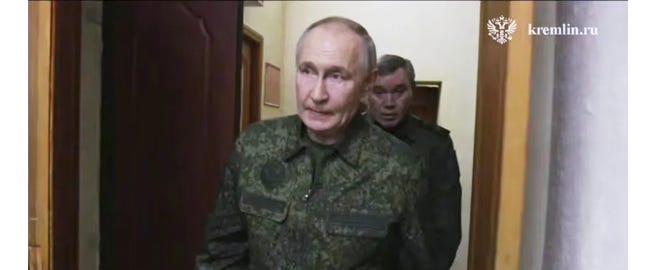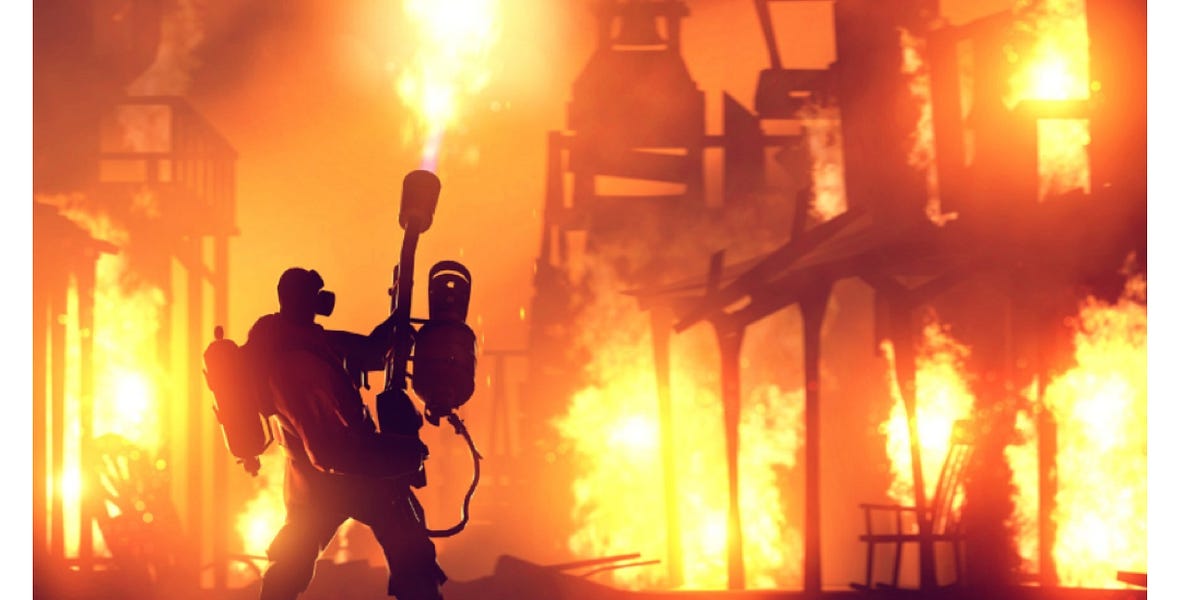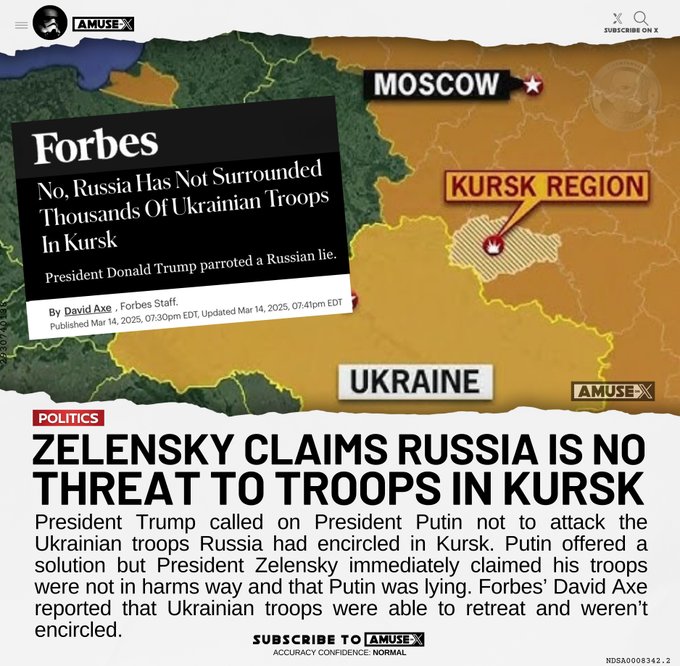Once Kiev’s Martial Law Administrator Zelensky was removed from the equation, it only took a single day for the U.S. and Ukrainian teams in Riyahd to negotiate a “deal.” The Wall Street Journal ran the story yesterday under the headline, “
U.S. to Restore Military Support to Ukraine After It Agrees to Cease-Fire.”
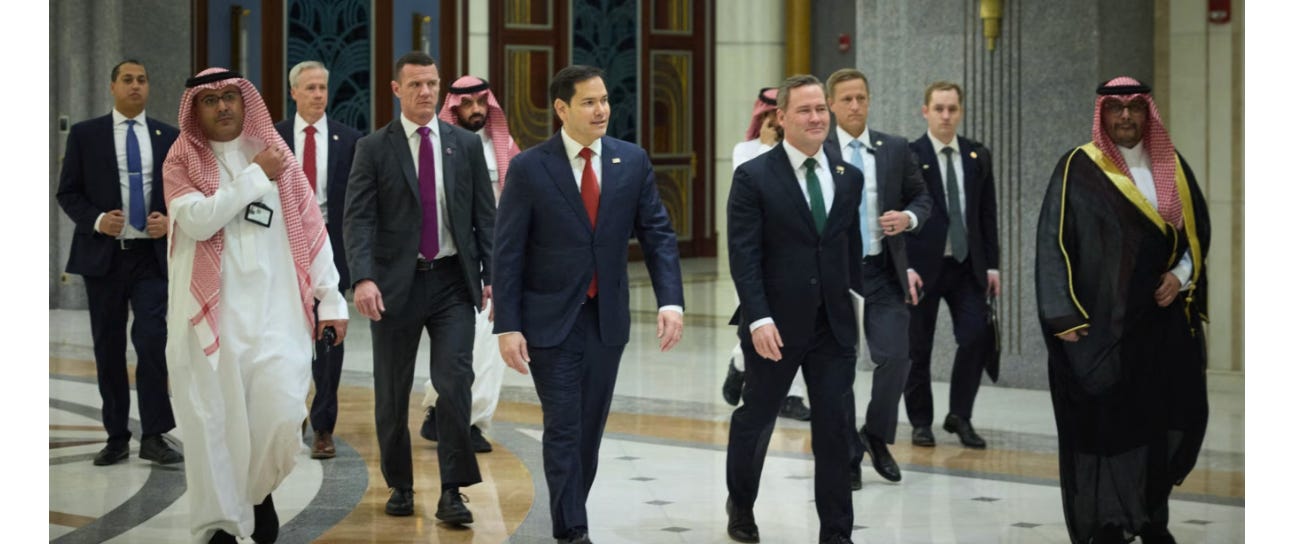
Not surprisingly, the deal’s inspecific terms were met with deep skepticism from all sides. But there is
some sort of agreement. Following a joint statement by the negotiating teams, Zelensky himself posted a video on X reinforcing his new willingness to work with President Trump. “We are ready to take such a step,” Zelensky said, clad in his normal avocado-toast-colored garb.
Secretary of State Marco Rubio told reporters, “Today we made an offer that the Ukrainians have accepted, which is to enter into a cease-fire and into immediate negotiations to end this conflict in a way that’s enduring and sustainable and accounts for their interests, their security, their ability to prosper as a nation.”
The Secretary added, “We will take this offer now to the Russians, and we hope that they’ll say ‘yes’— that they’ll say ‘yes’ to peace. The ball is now in their court.” That final sentence — I don’t believe this was coincidental — echoed Putin’s 2018 words to President Trump at the Helsinki summit. And
every European leader picked up on it:
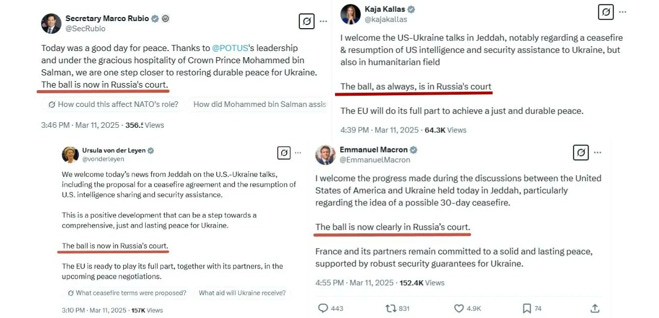
All
we know is the ‘deal’ traded the U.S. restarting its military aid and intelligence sharing in return for Ukraine’s compliance with a complete cease-fire and stand-down— but only if the Russians agree. Kiev also agreed to immediately commence negotiations with their Russian counterparts.
Most commenters focused on Russia’s consistent position that it would
never agree to a cease-fire, since it would only give the Ukrainians a chance to re-arm and dig in. But Russia has also consistently said it would negotiate at any time. And last year,
Russia proposed terms for a workable cease-fire, which included Ukraine’s removal of its troops from the contested areas and its agreement not to seek NATO membership.
So, the best way to read yesterday’s ‘deal’ is that the U.S. is making an
opening offer and is shepherding Ukraine to the negotiating table.
This morning, Reuters ran a story headlined, “
Russia says it's waiting to hear from US on Ukraine 30-day ceasefire plan.” The Kremlin responded to yesterday’s news by saying it needs to be fully briefed before it comments on whether the proposed ceasefire is acceptable to Russia. Kremlin spokesman Dmitry Peskov said a call between President Trump and President Putin could be organized quickly, if needed.
It was undeniable and unexpected progress. But before we look
forward trying to predict the unpredictable future, let’s look
back.

As talks kept its leaders occupied in Saudi Arabia, Ukraine suffered the greatest battlefield disaster in its short history—an unthinkable, bloody collapse that will haunt its leadership for years to come. It has never experienced a more catastrophic battlefield setback since it became an independent nation in 1991. Consider this pro-Ukraine map dated from last August, back when corporate media were euphoric over Ukraine’s daring invasion of Russia in the so-called Kursk pocket:
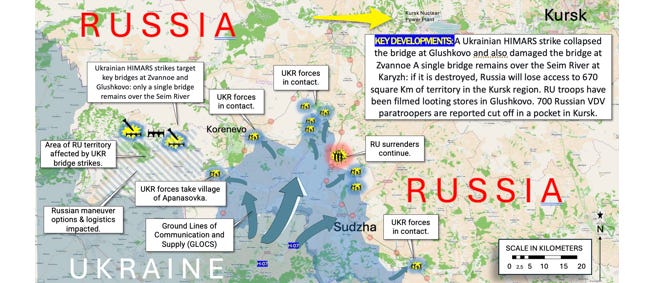
Kiev’s goal, never officially admitted, was to capture the Kursk nuclear power plant and the rumored nuclear weapons stored there. The Russians never let them get anywhere close to the power plant. But instead of withdrawing, the Ukrainians settled into a salient, which is the military term for being mostly surrounded— on three sides, instead of four.
Kiev also shipped its most experienced and most effective troops into the Kursk salient, for no good strategic reason making any kind of military sense.
Apart from the obvious encirclement problem, salients suffer from an even more profound logistical weakness. A salient is a death trap waiting to happen. Supplies can only come through a single route. Cut off that vital artery, and the isolated defenders quickly starve, run out of ammo, and die.
Over the last eight months, the Russians have steadily built up their forces along the edges and tightened the noose around the salient’s neck. Last week, Russian forces finally achieved full ‘fire control’ over the one open highway enabling the Ukrainians to ship critical supplies and troops to the encircled forces inside the salient.
Then, on Monday, the Russians sprang the trap. They commenced a long-planned, massive pincer movement, in two days brutally collapsing the Kursk pocket down to a disorganized nub. Reports say Ukrainian defenders lost an astonishing 200 kilometers of territory. Although reports are parsimonous —corporate media is trying its best to pretend nothing’s happening— the catastrophic battlefield results suggest thousands of top Ukrainian troops have been killed or captured.
It is also a political disaster. Zelensky staked his faltering political reputation on his bold counter-invasion of Russia. He gambled his reputation on Kursk—and now he may not survive the fallout.
Related: The fanatically pro-Ukraine UK Telegraph ran an op-ed on Monday headlined, “
We may be approaching the final days of Zelensky’s presidency.”
Terrific EPA news buried in NYT spin; Ukraine’s instant ceasefire deal & its historical echoes; Kursk disaster reshapes the war; inflation wrecks Dem narratives on eggs & gas; and much more.

www.coffeeandcovid.com






